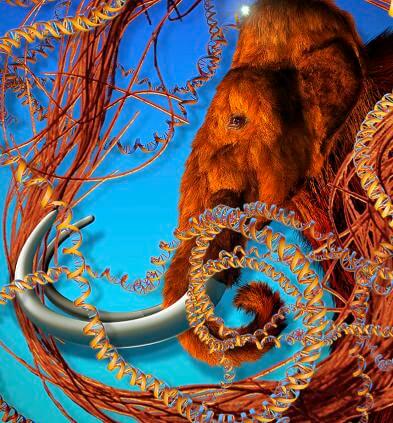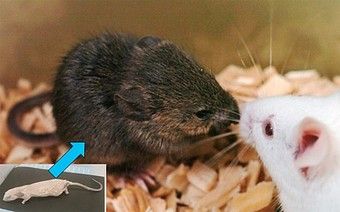Cloning Extinct Species: How Close Are We?

Share
For as long as life has been a feature of this planet, natural selection has been wiping out species with subpar adaptive strategies. Among the casualties: dinosaurs, mammoths, Neanderthals, and all manner of megafauna that we’d all love to see first-hand. Alas, mother nature hasn’t been particularly forgiving of species selected against: for four billion years, extinction meant extinction. That is, until last year.
The exception to this sobering evolutionary rule? The Pyrenean ibex, a kind of goat native to the Pyrenees Mountains between Spain and France. For a century, this subspecies of Spanish ibex had been living on the brink of extinction; on January 6, 2000, the last surviving Pyrenean ibex (named Celia) was naturally selected against via a falling tree. Fast forward to 2009, when scientists used frozen tissue to successfully clone Celia, making the ibex the first species (or subspecies) to become un-extinct. Well, for seven minutes.
Celia’s second incarnation died shortly after birth due to physical defects in her lungs, one of a variety of problems common to cloned mammals (other defects include malformed hearts, compromised immune systems, and developmental delays). Cloning is generally accomplished by somatic cell nuclear transfer (SCNT), a process by which a surrogate egg is implanted with the nuclear DNA of the organism to be cloned. But the process is terribly inefficient: Celia’s DNA was implanted into 439 eggs to form embryos, only 57 of which were implanted into surrogate goats, only 5 of which were born, and only one of which was born alive. And that’s what happens with a good genetic sample.
Cloning requires high quality DNA, which is generally in short supply for extinct species. When an organism dies, its cells release enzymes that break down the nuclear chromosomes into short strands of DNA. Over time, this genetic material gets mixed in with bacterial DNA and other life forms that invade the tissue. Nucleotides can also change over time, swapping A’s for T’s and G’s for C’s. By the time we dig up bones of extinct species, they are often too genetically noisy to pick out the original genome. So what options are there?
There are two potential ways to bring long-extinct species back to the present day, and both involve injecting a surrogate egg with the target species’ DNA. The first method is in vitro fertilization of the egg using frozen sperm. This method produces a hybrid between two species (e.g. an elephant and mammoth) and it is only a viable option if the target species’ and the egg donor species’ DNA are similar enough to produce a viable embryo (you can’t implant a dog with a dinosaur). By backcrossing hybrid offspring, breeders could then produce a more pure lineage over time.
The second method of resurrecting ancient species is by pure cloning: emptying the surrogate egg of its own DNA, and injecting it with a copy of the target species’ genome. There are two potential sources of such a genome: researchers can use well preserved (e.g. frozen) somatic cells, as in Celia’s case, or they can build the genome up themselves. No species has yet been cloned with reconstructed DNA, but for long-gone species it might be our best shot.
The mammoth is probably the most likely species to go un-extinct anytime soon. While most researchers feel that frozen mammoths’ DNA is too damaged for cloning, we are close to having sequenced their entire genome (it will be the first completed genome for a long-dead species). Penn State University’s Mammoth Genome Project has sequenced roughly 85% of the mammoth’s DNA; once the MIT/Harvard Broad Institute’s Elephant Genome Project is completed, cross-comparison will allow PSU to close in on that final 15%. But knowing a species’ sequence doesn’t mean it could be cloned: we would either need to stitch together a synthetic version, or alter an elephant’s genome at the relevant sites. We can’t do either yet.
Be Part of the Future
Sign up to receive top stories about groundbreaking technologies and visionary thinkers from SingularityHub.


That’s why some ambitious Japanese scientists are betting on frozen tissue instead. The privately funded Mammoth Creation Project aims to resurrect the long-dead species by retrieving frozen sperm from the tundra and creating an elephant/mammoth hybrid. They even plan to make a Critchon-esque “Pleistocene Park” in Siberia to show off their creation to the world. Not much news has emerged on the efforts’ progress, though the theoretical basis of deep freeze resurrection did get a recent boost. In 2008, researchers at Japan’s RIKEN Institute successfully cloned a mouse whose cells had been damaged from 16 years of sub-freezing temperatures – the technique could potentially translate to mammoth tissue as well.
While mammoths often died and froze in the tundra, Neanderthals have (thus far) left us mostly bones. But that hasn't stopped progress in the Neanderthal Genome Project, a collaborative effort between Max Planck Institute and 454 Life Sciences. Just this May, an initial draft of the Neanderthal genome was published in Science – and it revealed the widely reported gene swapping (i.e. interbreeding) between their lineage and ours. As with the mammoth, the genetic samples were noisy: fragments of Neanderthal genes were mixed in with bacterial and fungal DNA, as well as the human DNA of the scientists who dug it up (in fact, over 90% of the DNA in the samples were contaminant, i.e. non-Neanderthal). To distinguish which genetic material in bone samples were Neanderthal and which were not, researchers cross compared the samples with both human and chimp genomes.
As with mammoths, there’s a big difference between sequencing a Neanderthal genome and actually cloning one. A synthetically produced genome would need to be packaged into chromosomes that can be replicated in a cell, which we don’t know how to do yet. George Church has suggested that a technique invented in his lab, called MAGE, could be used to alter an induced pluripotent stem cell into the genome of a Neanderthal. The stem cell could then be induced to grow into a heart, arm, or brain of a Neanderthal for research purposes. And what about cloning a whole organism? It’s conceivable, but raises some rather sticky ethical concerns among the public and scientists alike.
In case you hadn’t guessed, dinosaurs are quite a ways off (just try a googling “Tyrannosaur Genome Project”). Ancient species have fewer close extant relatives which we can use for comparison, and their samples are worse for wear. Still, sequencing is getting faster and faster, and we seem to be doing better with noisy and damaged DNA. If we can iron out the difficulties of chromosome packing and clone viability, we can expect more species to join the un-extinct list. And for the roughly 100 species that go extinct every day? Well, besides slowing human-caused extinction with animal and environmental conservation, we can always put them on ice in a frozen zoo.
[image credit: Steven W Marcus, ExhibitEase LLC; RIKEN Institute]
[source note: some of the Neanderthal cloning progress came from an excellent article written recently for Archaeology, "Should we clone Neanderthals" by Zach Zorich]
Drew Halley is a graduate student researcher in Anthropology and is part of the Social Science Matrix at UC Berkeley. He is a PhD candidate in biological anthropology at UC Berkeley studying the evolution of primate brain development. His undergraduate research looked at the genetics of neurotransmission, human sexuality, and flotation tank sensory deprivation at Penn State University. He also enjoys brewing beer, photography, public science education, and dungeness crab. Drew was recommended for the Science Envoy program by UC Berkeley anthropologist/neuroscientist Terrence Deacon.
Related Articles

This Week’s Awesome Tech Stories From Around the Web (Through December 13)

New Immune Treatment May Suppress HIV—No Daily Pills Required

How Scientists Are Growing Computers From Human Brain Cells—and Why They Want to Keep Doing It
What we’re reading

